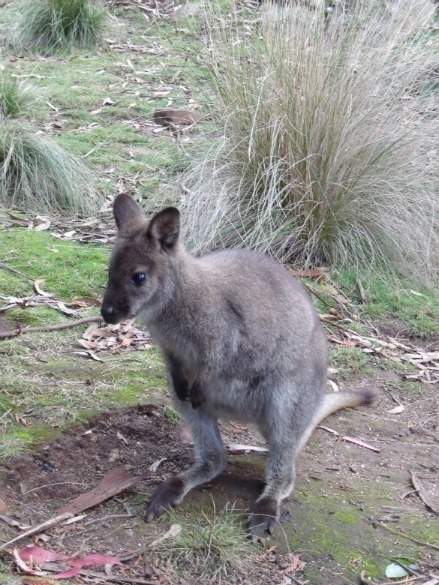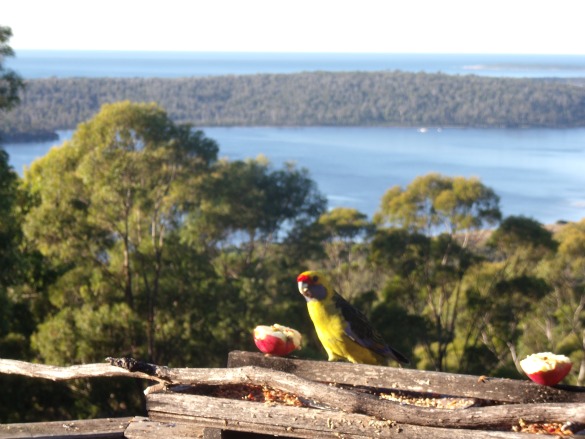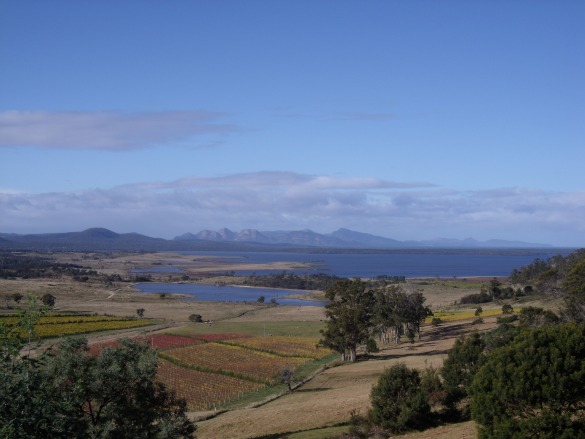“Just one little fella today,” grins a fisherman as he reveals a glistening Tasmanian Salmon writhing in his bucket. He beams as we peer in to discover his wonderful understatement; the thing must be nearly two feet long. “Still, a bad day of fishing beats a good day at work any day” he chuckles as he casts a gaze over the expanse of azure blue he has all too himself. There is an unbridled sense of abundance in this scene that seems to follow us on our journey.
We are on a five-day drive down Tasmania’s wild, west coast, a winding trail of virginal beaches, uninterrupted landscapes, as well as celebrated food and wine. Our journey begins in Launceston, or “Lonnie”, as we are frequently corrected with good-natured cheer. Set amidst the hills that rise above the Tamar River, Tasmania’s second biggest city is a charming blend of Victorian and Georgian architecture, sprawling parks and meandering paths that follow the course of the river.
To the south west of the town centre lies Cataract Gorge, a spectacular ravine that boasts what is believed to be the longest single span chairlift in the world at 308 metres. Travelling over the largest of the gorge’s three main basins, it offers a birds eye view of the craggy teeth of dolerite that thrust through the autumnal brown canopy of the South Esk Pines, named after the river that courses through the gorge. A network of walking trails criss-cross the surrounding parklands and gardens where peacocks strut around while black-nosed Bennett’s Wallabies, barely a foot tall, wander out of the bush in search of a feed from generous tourists.
That night we treat ourselves to dinner at the award winning Still Water Restaurant. Set in the charming ambience of a restored 19th century grain mill, Still Water overlooks the Tamar and its assembled fishing fleet. We wash down exquisite creations of locally caught salmon, duck and rabbit with a generous selection of the regions finest beers and wines.
The A3 highway, which runs east to the coast, snakes its way through towering pines and rainforests before giving way to gentle, rolling hills and towns that bear more than a passing resemblance to their British namesakes. We break the trip with coffee in the Scottsdale Art Gallery, and lunch at Pyengana Cheese Factory. A tasting of creamy, mature cheddars wets our appetite for a ploughman’s lunch of the establishment’s signature cheeses accompanied by generous swathes of ham, warm, freshly baked beer bread as well as sweet chutneys and jams.
After a brief pause in the sleepy seaside town of St Helens to collect an armful of brochures, we head for the Bay of Fires, a pristine coastline of ivory white beaches and crystalline sea. Sparsely populated, it retains a wild beauty with its seemingly endless succession of uninhabited beaches and bays that look onto the shimmering blue of the Tasman Sea. It is on one such beach we encounter our fisherman, a solitary figure on a beach that seems to reach for the horizon. Contrary to common assumption, the bay was not named after the ubiquitous orange lichen that clothes the rocks that litter this rugged coast. Its name instead came from French explorer Furneaux who, on his journey in 1773, was struck by the abundance of fires lit by local indigenous groups.
Our lodgings for the night are at the aptly named Bed in the Treetops, just outside Binnalong Bay at the Southern End of the Bay of Fires. Constructed entirely of local Tasmanian timbers, and set deep in 80 acres of towering bushland, this peaceful retreat offers rejuvenating quiet and sublime views across the coastline. “I’ll pass that on to the girls” quips Bruce, the tall and enthusiastic owner of the B&B when I complement the delicious eggs freshly laid by his hens. A flock of lime green rosellas join us for breakfast, gorging themselves on sweet, juicy apples.
On our next day we wind our way south following raw coastline and lingering in the charming town of Bicheno where the coffee is good and the smiles are broad. We make our way along the Freycinet Peninsula, where a preponderance of French names betrays the importance of Baudin’s 1803 expedition to the area’s history. After stopping in Coles Bay to sample an iconic curried scallop pie, we head for the acclaimed Wineglass Bay. Ranked by Lonely Planet as one of the ten best beaches in the world, the Bay is only accessible by a walking track that cuts its way through the spiny ridge of pink granite created by the Hazard Mountains.
At the top of the ridge, about a kilometre and a half from the car park, a viewing platform offers expansive views over the bay and the adjacent coastline. The dramatic flash of white on pure blue in the dazzling afternoon sunlight seems to justify the hype. We continue along the path that cuts a steep descent to the beach through dense tea-tree and blue gum bush where flame-breasted Scarlet Robins pose in the trees. On the beach the sand is luminous, the water translucent, almost convincing us to ignore the risk of hypothermia and dive in. A single fishing boat bobs in the distance and is the only other suggestion of human presence as a wallaby ambles out of the scrub, eyeing us with curiosity. Back at the car an hour or so later, beaded with sweat and labouring for breath, our adoration remains unblemished by the effort of getting back.
On the way out of town the next day we pause at the Freycinet and Coombend Vineyards to sample some award winning Pinot Noirs and Sauvignon Blancs. The road then charts the arc of Great Oyster Bay as it makes its way to the port towns of Orford and Triabunna. We break our journey at the Old Bark Saw Mill in Swansea for coffee and a look at their excellent museum dealing with the history of the local area, as well as the French expedition of 1803 that was the first significant European effort to explore and map the region.
On a coastline of defiantly small towns, Triabunna is amongst the smallest. Its primary attraction is its ferry service to Maria Island, an infamous convict outpost turned natural haven. Rugged cliffs and the decaying shells of convict buildings offer a glimpse into the island’s austere colonial history, while a web of walking tracks provide a unique chance to rendezvous with the cornucopia of wildlife that call the island home including Pademelons, Forester Kangaroos, Cape Barren Geese and Tasmanian Native Hens. We return on the late afternoon ferry as the sun sinks behind the foothills, leaving a patchwork sky of pink and orange in its wake, and end the day with a hearty, unpretentious meal at the Spring Bay Hotel, the town’s historic and only pub. It is our last chance to indulge in a place where food, views, wine and friendly smiles are available in generous abundance.


